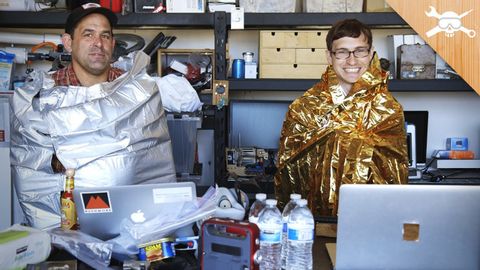
Subtitles & vocabulary
Build A Survival Kit BEFORE The Next Emergency or Disaster!!!
00
張育崧 posted on 2016/10/22Save
Video vocabulary
bag
US /bæɡ/
・
UK /bæɡ/
- Countable Noun
- Soft container to put things in and carry with you
- Transitive Verb
- To catch an animal while hunting
- To put an item or items into a bag
A1
More food
US /fud/
・
UK /fu:d/
- Noun (Countable/Uncountable)
- What people and animals eat to live
- Things taken in by plants to maintain life
A1TOEIC
More water
US /ˈwɔtɚ, ˈwɑtɚ/
・
UK /'wɔ:tə(r)/
- Uncountable Noun
- Clear liquid that forms the seas, rivers and rain
- Large area such as an ocean or sea
- Intransitive Verb
- (Of the eyes) to produce tears
- (Mouth) to become wet at the thought of nice food
A1
More carry
US /ˈkæri/
・
UK /ˈkæri/
- Verb (Transitive/Intransitive)
- To have a child, be pregnant
- To have a disease you might give to others
A1
More Use Energy
Unlock All Vocabulary
Unlock pronunciation, explanations, and filters
